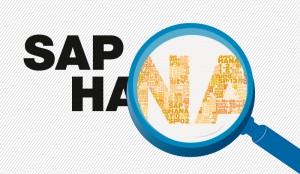In the second of a two part series, Malek el Khazen, Senior Certified Solution Architect at Logicalis US looks at the role SAP HANA can play in addressing ‘the need for speed’ in big data analytics – how its ability to deliver business intelligence in real time gives CXOs 20/20 vision when they need it most.
In part one of this series I outlined the very serious implications that can flow from an inability to access critical business data – in particular, how CXOs can be left ‘flying blind’ in a crisis simply because they do not have real time access to the insight required to make rapid, and accurate decisions.
The solution, as I pointed out, is to stop simply collecting data, and begin actually connecting with that data in meaningful ways that will enhance the company’s most critical decision-making processes. That means putting in place an analytics solution capable of delivering powerful business insight, drawn form ‘big data’ in real time.
However, selecting the right solution is a complex decision, and it’s one that each organisation must make based on a thorough assessment of its own unique business requirements, both now and in the future – because technology will undoubtedly move on and no-one wants to take the wrong option for the sake of a quick decision.
In my view, one solution that ticks all the boxes is SAP HANA. An in-memory database technology that leverages the low cost of computer server memory (RAM), the data processing abilities of multi-core processors, and the fast data access of solid-state drives, it delivers better performance of analytical and transactional applications.
I think there are at least four good reasons to look very closely at SAP HANA as a data analytics solution:
- Speed of Thought: SAP HANA’s in-memory database technology can give executives access to in-depth, meaningful, real-time data in the blink of an eye.
- More Up than Down: The data processing abilities of multi-core processors, and the fast data access of solid-state drives deliver better performance of analytical and transactional applications, which means companies won’t experience unacceptable downtimes while a data warehouse is loading data.
- Racing to Real-Time: By consolidating two database landscapes (OLAP and OLTP) into a single database, SAP HANA provides organisations with significantly lower total cost of ownership at real-time speeds that allow decision-makers to see current, up-to-the-moment data and make critical business decisions on the fly.
- Exceeding Expectations: SAP HANA can process both transactional and analytical workloads fully in-memory - as transactions are happening, organisations are able to report against them live. So, when there’s a need to create new reports or use analytical applications, IT won’t have to struggle to maintain the company’s business warehouse and keep it performing under changing user demands.
Of course, this is just one solution, albeit one that promises significant advances in the interrogation of business data – but it does signal a real shift in the data processing technology landscape. That is, we are rapidly approaching a point when it will be possible to compile every detail of an organisation’s life into a data stream where it can be viewed behind a single pane of glass - a dashboard of real-time business analytics.
It’s fair to say that CXOs in forward thinking organisations won’t be flying blind for much longer.

